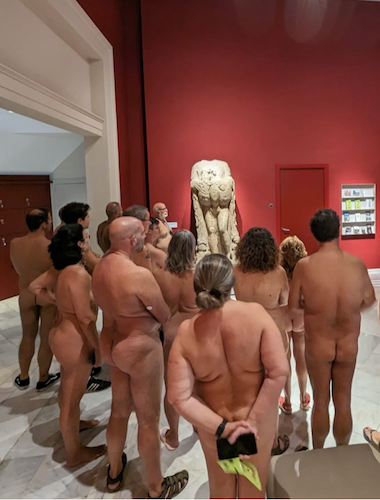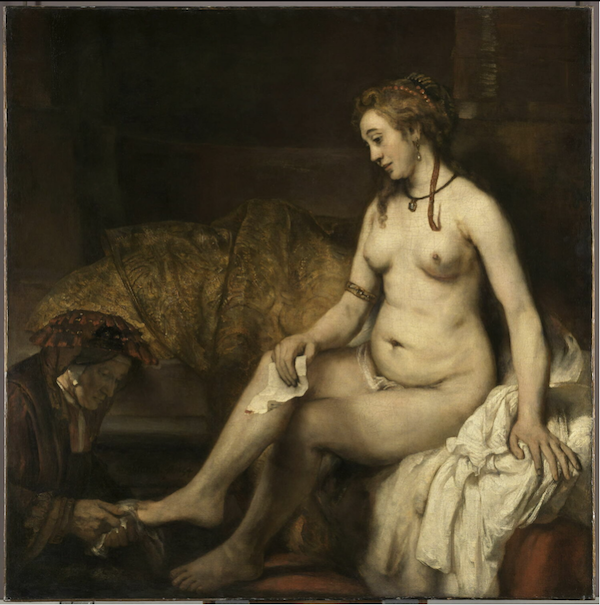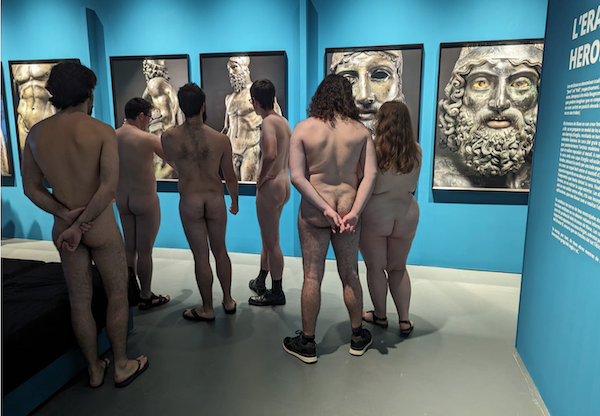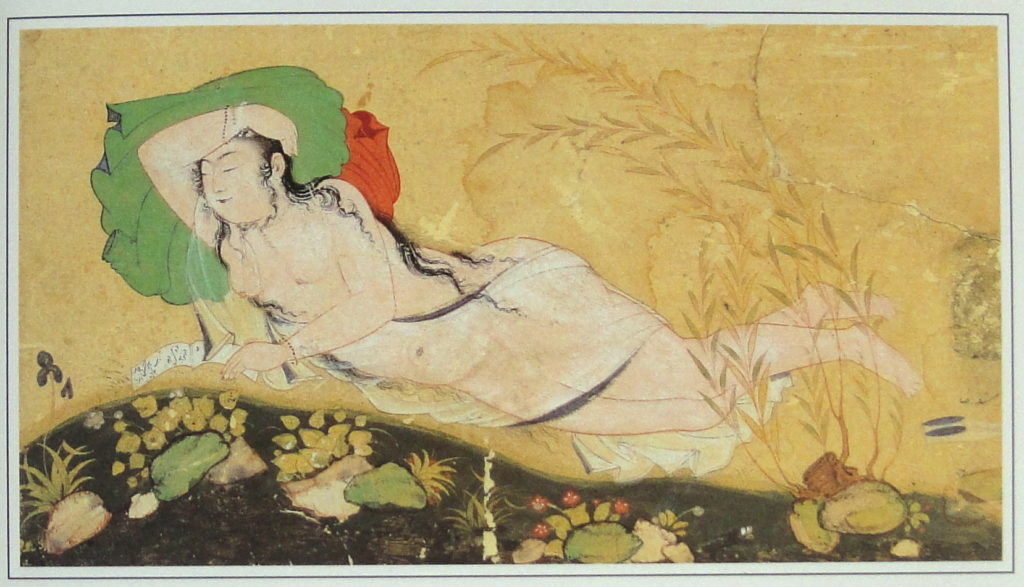Naked, naked, naked! Who hasn’t heard this mischievous expression chanted by high-school or university students, or even a few doddering soldiers? Yes, nudity is now experienced collectively, shared in clans, or unveiled in media demonstrations! So why not, after all, but nudity is provocative, because it reflects on our self-image!

©photo Club naturiste catalan
There’s nothing new under the sun, and Eve and Adam’s outfit has always been our bare property (to put it like a notary!). In fact, nudism and nudity have been a feature of public life for a long time now, even as far back as the hygienic period of the 1920s. Everyone’s getting in on the act – even museums, as we shall see!
And, it has to be said, the representation of the nude human body, both male and female, makes a mockery of religious prohibitions, Tartuffes and cenobite clergy*.
Our age, which claims to be libertarian, is not far removed from a paradox, and the so-called freedom of the individual has become (if you’ll pardon the expression) a kind of cover-up for a gregarious spirit that has now become globalized through social networks! In other words, and more often than not: the less we have to say it, the louder we shout it!
Or perhaps nudism should be seen as a declamatory form of authentic political and social demand for freedom and equality. However, in terms of aesthetics, let’s observe, without wishing to be too unkind, that not all free butts and breasts in the world are alike !
But in the realm of art, which as we all know is the quintessence of our humanity, Rembrandt’s sublime depiction of Bathsheba in the bath holding King David’s letter in the Louvre, for example (for me one of the Dutch master’s most moving paintings, and also – but this is just my opinion – the greatest painting in the whole history of art), touches us with the infinite emotion it contains.

Rembrandt van Rijn (1606-1669). Musée du Louvre
©2015 RMN-Grand Palais(musée du Louvre/ Mathieu Rabeau
In this way, Rembrandt surpasses Rubens, whose penchant for full-figured women’s bodies is well known. Unlike the Antwerp painter, Rembrandt’s flesh and body are not hedonistic and invigorating, but imbued with an interiorized, painful dejection and tightness of heart, in sad harmony with the painting’s very subject, in this case a written letter. In the same spirit, let’s not forget the nude Voltaire by J-B Pigalle (1714-1785), or Egon Schiele’s 20th-century nudes. Flesh is moving, even disturbing, and creates a sense of unease. A veritable palimpsest of life, the representation of nudity becomes anatomical.
And so, from Amsterdam to Paris, from New York to Barcelona in the summer months (it’s better that way!), from time to time, and preferably at weekends on foot or by bicycle, you can see motley groups of men and women of all ages displaying themselves in Adamic parades, to the amused or scandalized surprise of onlookers and other strollers.
A world of liberty opposed to totalitarian
We can certainly get annoyed when these demonstrations are expressed in provocative, exhibitionist and, all in all, ridiculous ways in the street, but when it’s a matter of action in the private sphere and under control like these communication operations organized by institutions, after all, and I repeat myself, why not!
I don’t think such a thing exists in Moscow, Beijing, Teheran or Istambul ! So, and this is new, nudity has become the thermometer of democracy. Tell me where you can wiggle outside, stick your buttocks out or show your breasts in public, and I’ll tell you what kind of country and society you live in (the Pussy Riots struggle in Russia is a case in point, see our article in WUKALI )! In short, the tense dialectic between a democratic society and a totalitarian regime. So, yes, and we can see how far we have to go for Islamists of all stripes (sorry!) who subjugate their women with the most unbearable cruelty, demanding that they cover every inch of their bodies with burkas or other textile straighttjackets. Nor should we forget that these are the same people who once dynamited the colossal statues of the Buddhas of Bâmiyân
Face-to-Face in a museum

©Photo Club naturiste catalan
In an article on nudity, how could we fail to mention ancient Greek statuary: Phidias, Praxiteles, Lysippus and all those magnificent academies, the nudes of Western painting, from the Renaissance to Auguste Renoir which nourish our culture and our imaginations and hang in our museums.
And all – yes, all – civilizations, East and West alike, have depicted the naked human body, even Islam, which is funny to note in a region of Asia that today corresponds to Iran and Afghanistan, during the Sefevid period (1501 to 1736)! No further comment is necessary!

9,16cm/ 16cm. Smithonian Institute. Washington. USA
Today, museums the world over are showing their imagination to seduce and win over new audiences. Society is thus divided into a myriad of microcosms, differentiated niches that must be teased. The blind, have the lion’s share of time here, and special opening hours are devoted to them. They can, for example, touch and caress the sculpture with their fingers, which is normally forbidden, and feel the relief of a work of art. There are many other examples.
Barcelona, the capital of Catalonia in Spain in particular, has historically been a microcosm of freedom, and it’s only natural that one of its museums, the Archaeological Museum, should have opened its rooms to a group of nudists. The exhibition of photographs of statues of Race Greek warriors by the Italian artist Luigi Spina, currently on show there, served as a showcase (see our illustrative photos).
So who’s looking at whom? The visitor the work or the statue the viewer? Yes, of course, since art is life, the work – in this case, the photographs of the Greek bronzes – are in silent dialogue with each of those who face them, and so the world has always been, in all its diversity and mystery!
You’ll find this text in its original French version, just click on the French flag up page or here
Would you like to react to this editorial or even write in WUKALI
Don’t hesitate, contact us


